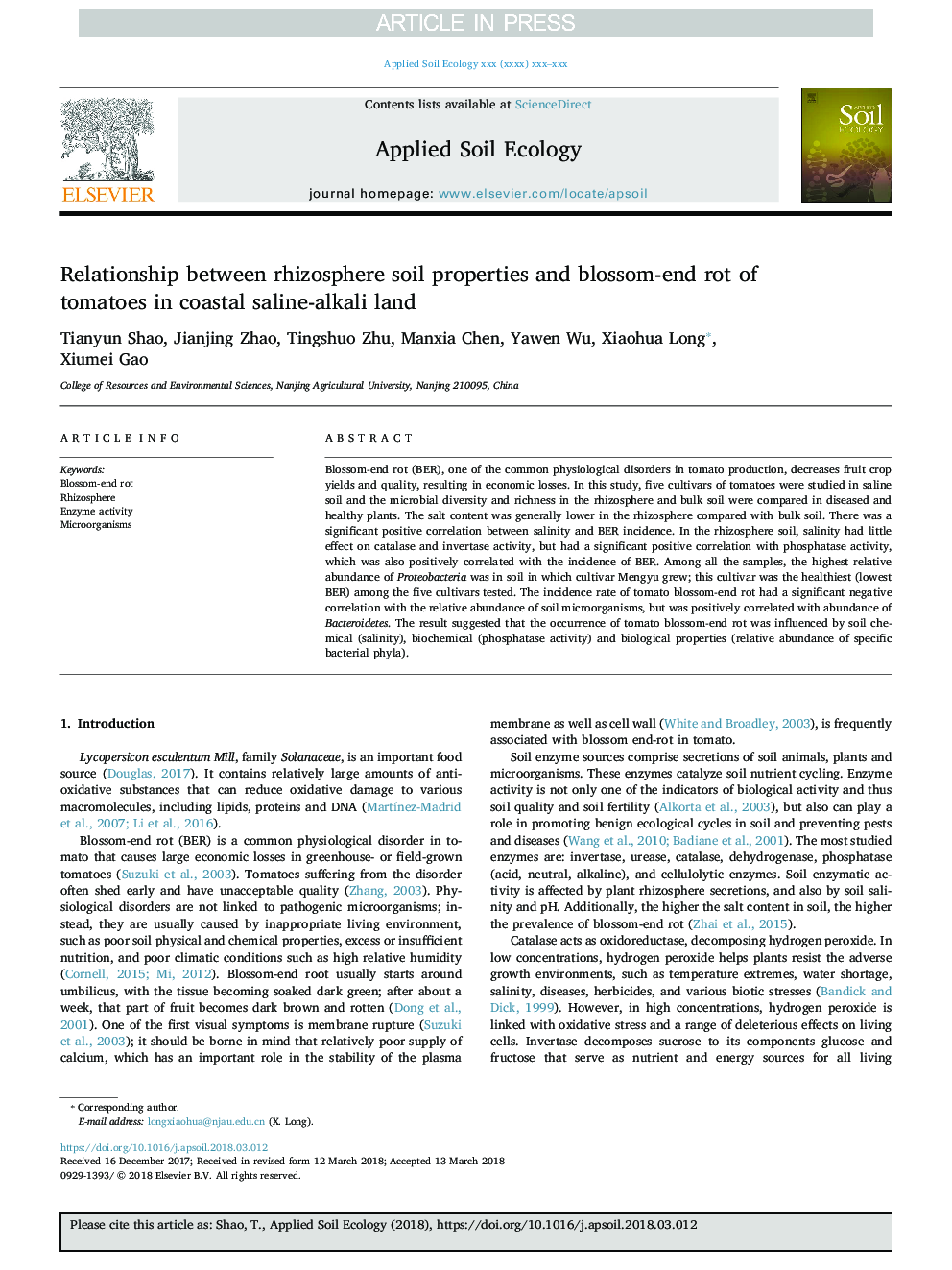| Article ID | Journal | Published Year | Pages | File Type |
|---|---|---|---|---|
| 8846648 | Applied Soil Ecology | 2018 | 6 Pages |
Abstract
Blossom-end rot (BER), one of the common physiological disorders in tomato production, decreases fruit crop yields and quality, resulting in economic losses. In this study, five cultivars of tomatoes were studied in saline soil and the microbial diversity and richness in the rhizosphere and bulk soil were compared in diseased and healthy plants. The salt content was generally lower in the rhizosphere compared with bulk soil. There was a significant positive correlation between salinity and BER incidence. In the rhizosphere soil, salinity had little effect on catalase and invertase activity, but had a significant positive correlation with phosphatase activity, which was also positively correlated with the incidence of BER. Among all the samples, the highest relative abundance of Proteobacteria was in soil in which cultivar Mengyu grew; this cultivar was the healthiest (lowest BER) among the five cultivars tested. The incidence rate of tomato blossom-end rot had a significant negative correlation with the relative abundance of soil microorganisms, but was positively correlated with abundance of Bacteroidetes. The result suggested that the occurrence of tomato blossom-end rot was influenced by soil chemical (salinity), biochemical (phosphatase activity) and biological properties (relative abundance of specific bacterial phyla).
Related Topics
Life Sciences
Agricultural and Biological Sciences
Ecology, Evolution, Behavior and Systematics
Authors
Tianyun Shao, Jianjing Zhao, Tingshuo Zhu, Manxia Chen, Yawen Wu, Xiaohua Long, Xiumei Gao,
